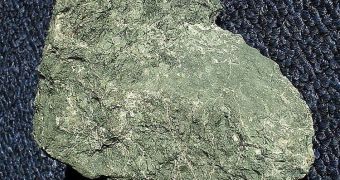An international team of investigators believes it may have discovered one of the possible birthplaces of life here on Earth. The research took the group to the mud volcanoes of Isua, in southwestern Greenland. The location fulfilled all necessary conditions to support the development of life.
The team was led by experts with the Laboratoire de Géologie de Lyon: Terre, Planètes et Environnement (CNRS/Université Claude Bernard Lyon 1/ENS de Lyon). They say that life may have first developed here nearly 4 billion years ago.
At that time, these volcanoes were releasing a host of chemicals that were absolutely necessary for the creation of the first biomolecules. Once these constructs came together, life had access to the most important conditions it needed in order to develop and thrive.
According to geologists and other scientists, it may be that this was the first time when all of these conditions were met in a single place. Analysis of the mud volcanoes revealed that everything life needed to develop existed here about 3.8 billion years ago.
Details of the new research were published in this week's issue of the esteemed journal Proceedings of the National Academy of Sciences (PNAS), AlphaGalileo reports. Most of the structures are made up of the dark green mineral called serpentinite.
This material has until now been used to make decorations and jewelry, but researchers say that it can only form when seawater infiltrates the upper mantle covering our plant. The process takes place at depths that can exceed 200 kilometers (124.2 miles).
Many experts are convinced that the mineral played a significant role in the emergence of the first biomolecules. The walls of hydrothermal vents are oftentimes made up of serpentinite. Previous studies have shown that life most likely developed near such a structure.
For many years, scientists were convinced that oceanic vents were the birthplace of life, but more recent investigations have revealed that amino-acid stabilization – a process necessary for the formation of organic molecules – could not possibly occur in the highly-acidic environment around the vents.
At Isua, studies revealed that conditions were extremely favorable for the development of amino-acids. This does not automatically mean that the earliest lifeforms developed here, but it does make the place a very likely candidate.

 14 DAY TRIAL //
14 DAY TRIAL //